Google Nexus 5 vs LG G2

Introduction
And so begins the reign of the latest Nexus smartphone, the aptly named Google Nexus 5, which like its predecessor, has that killer one-two punch with its affordable cost and impressive set of hardware. As we all know, though, the Nexus 5 reads very similar to another LG-made smartphone – the LG G2. Comparing the two together, it’s obvious that they share many commonalities, but they’re also very different.
Whereas the Nexus 5 goes the outright, no-contract route, the LG G2 stays firm by being a premium smartphone that’s featured as a contract option on the lineups of many domestic wireless carriers. Some would argue that this is an unusual tactic, seeing that these two LG-made smartphones are going to butt head against one another, vying to catch the hearts and minds of hungry consumers – possibly cannibalizing on its others’ sales. However, at the end of the day, they require the same in-depth comparison like everything else we’ve done, to determine exactly how they stack up against one another.
Design
From a far distance, you’d be hard pressed to even realize any differences between their designs. Heck, we even have a tough time, mainly because they closely match each other with their size, weight, and choice of materials. That all changes the moment they’re both held in our hands, as it’s quite evident that the Nexus 5 has a more modest design – whereas the G2, has a fancier finish that’s meant to have a more polarizing effect. Indeed, the two are constructed from polycarbonate plastic, but the soft touch matte finish of the Nexus 5 helps to give it a cleaner look. In contrast, the glossy finish of the LG G2 makes it feel a bit slippery in the hand, and at the same time, it’s more prone to finger print and smudges.
When it comes to the in-the-hand feel, it’s the LG G2 that has a more comfortable and natural feel. Yes, the soft touch finish of the Nexus 5 again helps to give it a grippy feel, but its hard lines don’t feel as good when compared to the subtle curve around the LG G2’s rear casing. In addition, those curves around the G2’s back help to perfectly contour the shape of our hand – and that’s despite being the slightly wider smartphone.
Overall, the LG G2’s design is undoubtedly more eye-catchy, which is further strengthened by the peculiar pattern design of its casing. Depending on the angle, it can develop this shimmering effect to catch our attention.
Display
In making them oh-so lovable, these two Android smartphones are blessed with some snazzy looking displays. To be more specific, it’s a 5-inch 1080x1920 (1080p) IPS LCD display on the Nexus 5 – while the G2 sports a slightly larger 5.2-inch 1080p IPS LCD display. Furthermore, their displays are notable for the skinny bezels surrounding the sides, which help them to maintain their somewhat compact size. Like their designs, it would seem as though they exhibit the same qualities, but upon closer inspection, we do have a clear victor in this particular category.
On paper, the Nexus 5’s display technically delivers the higher details, thanks to its pixel density count of 445 ppi, which is a smidgen better than the G2’s tally of 423 ppi. Unless you have bionic eyes or something, you won’t actually see the slight superiority of the Nexus 5. Therefore, whether it’s from a normal distance away, or close up when it’s a few inches away from our eyes, these two deliver the same crisp visuals that keep our eyes glued to them.Well, it’s wonderful to know that they offer great outdoor visibility, thanks in part to their strong brightness output and contrast with their panels. In addition, it also helps when their color reproductions are very realistic too. However, the Nexus 5’s display is plagued by this washed out look at wide viewing angles – where it produces a milky tone with the color black. Although it’s there too with the G2, it’s actually more subdued, so it’s able to maintain its clarity better. At the end of the day, the two are undoubtedly sharp looking, but we still find ourselves being attracted slightly more to the G2’s display.
Google Nexus 5 360-Degrees View
LG G2 360-Degrees View
Interface and Functionality
Internally, the hardware inside of them are nearly identical, but their software experiences are on opposite ends of the spectrum. To sum it up, the Nexus 5’s pure Android 4.4 KitKat experience delivers a more defined approach that entices us with its straightforward, hassle-free experience, which means we’re not inundated by any redundancies with its functional offerings. Oppositely, the LG G2’s customized Android 4.2.2 Jelly Bean experience feels more cramped with its offerings, as it throws several functions that, depending on the individual, might prove to be either distracting or enhancing.
Aesthetically, the Nexus 5’s KitKat experience does away with the campy visuals put out by the G2’s customized experience, relying instead of having a cleaner interface that’s easier to manage and navigate. And that’s basically the reason why we prefer it more, as the G2’s interface looks a bit too cartoonish.
At the core, the two experiences deliver the same foundational properties . However, as we can clearly see between them, the G2’s experience is armed with several features – to the point that the same end function can be accomplished in several ways. For example, the multi-tasking aspect of the platform is handled in the same normal manner we’re accustomed to using, but the G2 goes beyond by offering its QSldie and Slide Aside features. Appreciated no doubt depending on the user, but again, we have to stress the point that it’s not something that would be ingrained deeply into our minds as something we’d use day in, day out.
When the smoke settles and then disappears, we can’t help but appreciate the simplified approach of the Nexus 5’s Android 4.4 KitKat experience. It’s just so darn easy and straightforward, to the point that the complexities of Android past are all but gone. On the flip side, the G2’s experience, much like its visual presentation, is cluttered to the point that some features might seem redundant to the broad range of consumers out there – though nonetheless, having more is always a good thing.
Besides the visual differences, the core set of organizer apps on both handsets function identically. Moreover, they both offer the invaluable functionality that accompanies the Google Now experience – albeit, we like the newer implementation of it with the Nexus 5. Specifically, in addition to the usual way of accessing it, we can instantly jump into it from the homescreen by swiping all the way to the left most homescreen. Better yet, we can launch Google Voice search by speaking the phrase “okay Google” at any time while on the homescreen – giving us control in opening up apps, scheduling an appointment, calling someone, and much more.
Due to the ample sized screens on both, we find them superb for typing up messages with their respective on-screen keyboards. Again, we can see the evidence in how their platform experiences define their keyboard layouts, as it’s a simplified one with the Nexus 5 – versus the G2’s keyboard, which is filled with several numbers and punctuations that are all accessible from the main layout. Still, we appreciate their responsiveness!
Processor and Memory
It’s rather interesting to know what these two are made of under the hood, especially when the pricing between them are great. In giving them precedence over some other flagships, they’re armed with the latest and greatest hardware – a quad-core 2.3GHz Qualcomm Snapdragon 800 SoC coupled with 2GB of LPDDR3 RAM and the Adreno 330 GPU. Honestly, these two roar with a ton of snappiness and responsiveness with their performances. So even as we take a peek at their benchmark test results, it’s obvious that they match one another very closely. In all fairness, there’s nothing that these two can’t do – both simple and complex tasks. Best of all, they don’t exhibit a whole lot of lag or slowdown.
The Nexus 5 is available in both 16GB and 32GB capacities, two options that are the standard fanfare. As for the LG G2, it’s only offered in the US with 32GB of internal storage. Of course, with their closed designs, there’s no way of expanding their capacities.
Internet and Connectivity
Combining the powerful performances of the two with the availability of 4G LTE connectivity, they’re equipped at handling all of our needs with the web browsing experience. Naturally, pages load super quick thanks to LTE, but we see the same awesome movements with other aspects of the experience – like page rendering and navigational controls. Furthermore, their sharp displays also help to complement the entire experience.
As we all know, there are several versions of both smartphones, outfitted to work with the various GSM and CDMA networks littered throughout the world. They also share the same set of connectivity features as well, such as aGPS, Bluetooth 4.0, dual-band 802.11 a/b/g/n Wi-Fi, and NFC. However, the Nexus 5 extends its worth by offering this new Tap & Pay feature, wireless printing, and wireless charging.
Camera
Simple is seen as a good thing, but when it comes to the camera experience, we take kindly on the vast offerings presented to us by the LG G2. And why is that? Well, that’s because it boasts several shooting modes and manual controls that give both novice and hardcore shutterbugs something to play around with. Indeed, the Nexus 5’s camera app is by comparison barren and devoid of such secondary features, placing emphasis on just snapping the moment. Despite that, we can’t help to be gravitated towards the cool shooting modes with the G2.
The Nexus 5’s camera quality might be underrated, even more knowing that it’s an 8-megapixel camera – versus the beefier 13-megapixel monster of the LG G2. However, both have f2.4 aperture and feature optical image stabilization (OIS) , designed to compensate for your hands movements, thus diminishing shaky videos or blur when lower shutter speeds are used.
We’re surprised by how well the Nexus 5 can hold its own ground. Quite frankly, the two phones snap some pretty good looking photos outdoors when lighting is plentiful, though, the G2’s shots present a little more detail thanks to its larger megapixel count. On the colors front, the Nexus 5 has a bit more vibrancy due to the amount of saturation it’s able to pull out – whereas with the G2, it’s more on the cooler side.
Taking it under low lighting conditions, it’s a mixed bag between these two, where one can deliver the better results – and vice versa. It helps that the focus is considerably faster with the Nexus 5’s camera, since it takes a great deal of time for it to happen with the G2. Despite that, we like the results we see with the G2’s performance, as it delivers the sharper visuals between the two. In addition, its exposure is more balanced throughout the shot, offering good visibility to areas where there’s a vast difference between lighting. Now the Nexus 5 admirably does its best too, but as a whole, it tends to exhibit more noise and softer details.
Without question, the LG G2 proves its superiority over the Nexus 5 when it comes to recording 1080p high definition videos. For starters, it simply captures details that are sharp and distinctive – plus, it helps when it has that rare 60 FPS capture rate. It’s not bad either with the Nexus 5, seeing that it has a good balance, but its focus is more jittery with its operation, causing it to go in and out quite frequently.
Multimedia
So yeah, they both are preloaded with the Google Play Music app, but it’s the G2 that offers an alternative option in the LG-made music player. To tell you the truth, though, we don’t find its presentation to be any better than the Google Play Music app. Unfortunately, the audio quality of each speaker is rather disappointing – to the point that they can become detractive to the experience. Well, we notice a bit more crackling with the Nexus 5’s speaker.
Between the two, we slightly favor the G2 when it comes to watching high-definition videos. First, its screen is more vibrant from all angles, allowing us to absorb everything its displays. Secondly, it offers more video codec support over the Nexus 5. And finally, we can utilize the QSlide feature of its experience to minimize the app to offer us better multi-tasking. It’s still not that bad with the Nexus 5, but it just can’t compete against the all-encompassing experience of the G2.
Call Quality
Luckily, they’re not totally unusable, but overall, we’re not flattered with the phone call qualities of either device. On the Nexus 5, its earpiece is very weak and emits muted voices – plus, its speakerphone produce a noticeable amount of crackling. As for the G2, its biggest sore spot is found on the other end of the line, as our callers say they have difficulty hearing us due to the crackled toned voices that are being transmitted over to them.
Battery
Running our customized script to determine the battery life of each, we find that the G2 churns out more juice from its fully charged battery. To be exact, it provides us with a total time of 6 hours 48 minutes – where it’s 4 hours 50 minutes with the Nexus 5. In our day-to-day real life usage, the G2 permits us roughly 14 hours of usage from its 3000 mAh battery, which is better than the 12 hours put out by the 2300 mAh battery from the Nexus 5.
Conclusion
If we’re to dissect every single category and determine a winner, it seems as though that the LG G2 would come out as being victorious. From its more pleasing design, to its slightly superior performance in various key areas, the G2 delivers the goods to make it a fine and dandy smartphone. On the software side, the decision is harder to justify, since either experiences can prove to be more beneficial depending on the user. Certainly, we appreciate that the Android 4.4 KitKat experience of the Nexus 5 is a simple one, but at the same time, people can also appreciate the wealth of primary and secondary features that accompany the LG G2’s customized Android 4.2.2 Jelly Bean experience.
Comparatively, these two are very similar under the hood, but we really have to consider their price points. One is meant to be bought outright without a contract, while the other is primarily sold with a 2-year contract. If we’re to take a peek at their outright pricing, the Nexus 5’s hard-to-beat $349 figure is a tough act to follow, since it seemingly offers that superb balance between pricing, hardware specs, and performance – so much better than the $525 full cost attached to the G2.

Follow us on Google News

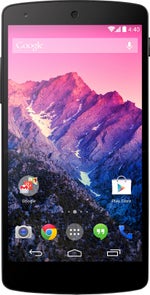









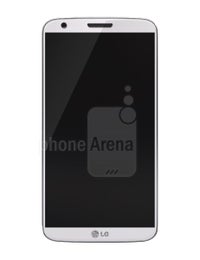
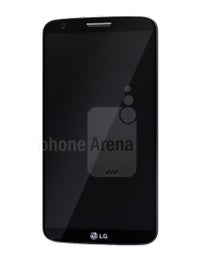



![New T-Mobile CEO has everyone on the edge of their seats with new teaser [UPDATED]](https://m-cdn.phonearena.com/images/article/175840-wide-two_350/New-T-Mobile-CEO-has-everyone-on-the-edge-of-their-seats-with-new-teaser-UPDATED.webp)



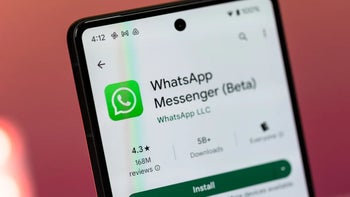
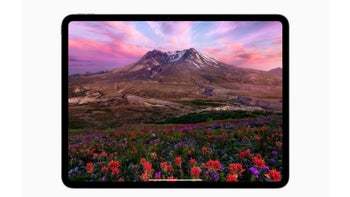

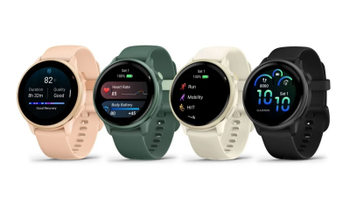
Things that are NOT allowed:
To help keep our community safe and free from spam, we apply temporary limits to newly created accounts: